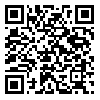Volume 23, Issue 4 (December 2025)
Iranian Rehabilitation Journal 2025, 23(4): 473-484 |
Back to browse issues page
Download citation:
BibTeX | RIS | EndNote | Medlars | ProCite | Reference Manager | RefWorks
Send citation to:



BibTeX | RIS | EndNote | Medlars | ProCite | Reference Manager | RefWorks
Send citation to:
Ahmadi S S, Teimourisangani M, Hozhabr M, Poormohammad A, Sobhani-Rad D. Understanding Cognitive and Linguistic Deficits in Aphasia Through Naming Reaction Time, Working Memory, and Executive Function. Iranian Rehabilitation Journal 2025; 23 (4) :473-484
URL: http://irj.uswr.ac.ir/article-1-2600-en.html
URL: http://irj.uswr.ac.ir/article-1-2600-en.html
Seyed Saeed Ahmadi1 

 , Mohyeddin Teimourisangani2
, Mohyeddin Teimourisangani2 

 , Mahshid Hozhabr2
, Mahshid Hozhabr2 

 , Ahmad Poormohammad3
, Ahmad Poormohammad3 

 , Davood Sobhani-Rad *2
, Davood Sobhani-Rad *2 




 , Mohyeddin Teimourisangani2
, Mohyeddin Teimourisangani2 

 , Mahshid Hozhabr2
, Mahshid Hozhabr2 

 , Ahmad Poormohammad3
, Ahmad Poormohammad3 

 , Davood Sobhani-Rad *2
, Davood Sobhani-Rad *2 


1- Department of Communication Sciences and Disorders, University of South Carolina, Columbia, United States. & Department of Speech Therapy, School of Paramedical and Rehabilitation Sciences, Mashhad University of Medical Sciences, Mashhad, Iran.
2- Department of Speech Therapy, School of Paramedical and Rehabilitation Sciences, Mashhad University of Medical Sciences, Mashhad, Iran.
3- Elumind Centres for Brain Excellence, Vancouver, Canada.
2- Department of Speech Therapy, School of Paramedical and Rehabilitation Sciences, Mashhad University of Medical Sciences, Mashhad, Iran.
3- Elumind Centres for Brain Excellence, Vancouver, Canada.
Abstract: (567 Views)
Objectives: Aphasia, an acquired multimodal language disorder caused by brain damage, impacts various linguistic and cognitive skills. Naming is a key aspect of language processing. This skill relies heavily on cognitive functions, such as reaction time, working memory, and executive functions, which together support effective communication. Understanding the relationships between these components can provide critical insights for improving rehabilitation strategies.
Methods: This study included 20 individuals diagnosed with Broca’s aphasia and 20 neurologically healthy controls. The participants were assessed using tasks measuring rapid automatized naming (RAN), reaction time, working memory, and executive function.
Results: People with aphasia (PWA) demonstrated significantly lower performance in all assessed domains compared to controls (P<0.001). RAN scores were markedly lower, with performance improving in high-context environments (P<0.001). Reaction times were significantly delayed in linguistic and non-linguistic tasks (P<0.001). Correlation analysis revealed positive relationships between RAN, working memory, and executive functions (P<0.001). However, RAN showed no direct correlation with reaction time (P>0.05).
Discussion: The findings indicate a relationship between cognitive and linguistic processes in aphasia, with working memory and executive function significantly related to language performance. Contextual visual cues are also associated with improvements in naming accuracy and speed. These results highlight the potential value of integrated cognitive-linguistic rehabilitation approaches for enhancing communication skills and quality of life (QoL) in individuals with aphasia.
Methods: This study included 20 individuals diagnosed with Broca’s aphasia and 20 neurologically healthy controls. The participants were assessed using tasks measuring rapid automatized naming (RAN), reaction time, working memory, and executive function.
Results: People with aphasia (PWA) demonstrated significantly lower performance in all assessed domains compared to controls (P<0.001). RAN scores were markedly lower, with performance improving in high-context environments (P<0.001). Reaction times were significantly delayed in linguistic and non-linguistic tasks (P<0.001). Correlation analysis revealed positive relationships between RAN, working memory, and executive functions (P<0.001). However, RAN showed no direct correlation with reaction time (P>0.05).
Discussion: The findings indicate a relationship between cognitive and linguistic processes in aphasia, with working memory and executive function significantly related to language performance. Contextual visual cues are also associated with improvements in naming accuracy and speed. These results highlight the potential value of integrated cognitive-linguistic rehabilitation approaches for enhancing communication skills and quality of life (QoL) in individuals with aphasia.
Article type: Original Research Articles |
Subject:
Speech therapy
Received: 2025/08/16 | Accepted: 2025/09/18 | Published: 2025/12/1
Received: 2025/08/16 | Accepted: 2025/09/18 | Published: 2025/12/1
Send email to the article author





